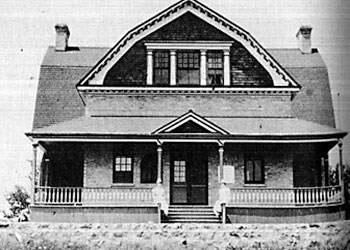Medicine has been an important part of any community, especially in the early days when hospitals were few and far between in the west, and it was up to area doctors to handle everything that was thrown at them over the course of a day's work. Yorkton was no different and with people arriving in the area in the early 1880s, the closest hospital was a few hundred miles away. The need for a local doctor was paramount.
That problem was solved in 1882 when Dr. J.D. Stevenson came to the area. Amazingly, he was only called upon once, in an entire year and that was to set a collarbone. Not surprisingly, when his year was up, he decided to leave for medical work elsewhere.
It would be five more years before another doctor would come. This time, it was a Dr. Watson, but he only stayed for a short time as well before leaving.
By 1900, the closest hospital was 16 miles to the southwest, but with a growing population, a local hospital was needed. As a result, on Jan. 25, 1901, town council held a meeting to discuss the need for a hospital in town. J.H. Nelson was asked to look into it and many meetings were held to bring about a hospital to the town.
On June 25, council met to discuss constructing a hospital and the town found out it was eligible for a $3,000 grant from the Lady Minto Cottage Hospital Fund. The fund was accepted after a brief discussion from council. A three-acre site was bought on Tupper Avenue for $100 and construction began. Tenders were awarded and J.W. Christie was hired to build the hospital for $4,900.
The need for a hospital became incredibly apparent that fall when typhoid fever broke out in town. On Sept. 24, a special meeting was held and council decided to rent out a house as an emergency hospital. Three men were appointed to manage the hospital; Mr. Simpson, Mr. Nelson and Mr. Pearson. Drs. Patrick and Cash were asked to prepare and circulate 200 circulars concerning typhoid fever. Patients who had a fever were admitted to the hospital and they were charged 90 cents per day to be there. The epidemic would last two and a half months, resulting in 20 cases. The town would spend $400 on the emergency hospital and in training. Only one person died.
On April 19, 1902, five months before the hospital officially opened, an ordinance was passed to name the hospital the Queen Victoria Cottage Hospital.
Once again, the town was hit with an epidemic when measles broke out in May of 1902 and council once again began renting a house to serve as a quarantine. The house, owned by George A. Betts, was rented for $12 a month and would be used as a temporary hospital until Sept. 20, 1902. Council then donated $500 to help with the construction of the new hospital and get it up and running.
On Oct. 21, 1902, the hospital officially opened. A two-storey building with a verandah, it contained 12 public ward beds and six private rooms. It also had a kitchen and an operating room. The staff consisted of Matron Seager, a probationary nurse, a cook and Drs. Patrick, Cash, Irving and Head-Patrick. That same year, a nursing school, the Yorkton School of Nursing, began to provide on-the-job training for nurses. This was highly beneficial because of the high demand for trainees at the hospital. The first graduate of the school would be Miss Muirman in 1905, followed by Miss Height in 1910.
The hospital would go through a number of major additions, expanding to the point that it changed its name to the Queen Victoria Hospital. In 1945, it became the Yorkton General Hospital. From 1959 to 1962, a new hospital was constructed with modern facilities.
Canadian History Ehx is not only a column, but also a podcast that publishes weekly with interesting stories of our great nation. You can learn more about the podcast by visiting http://canadaehx.blogspot.com
If you have any questions or would like Craig to look at something specific from Yorkton's history, e-mail him at [email protected]




